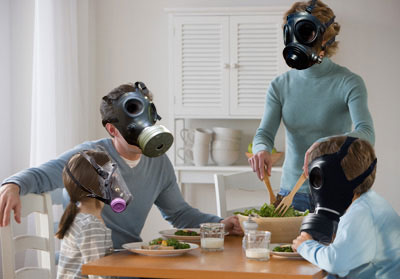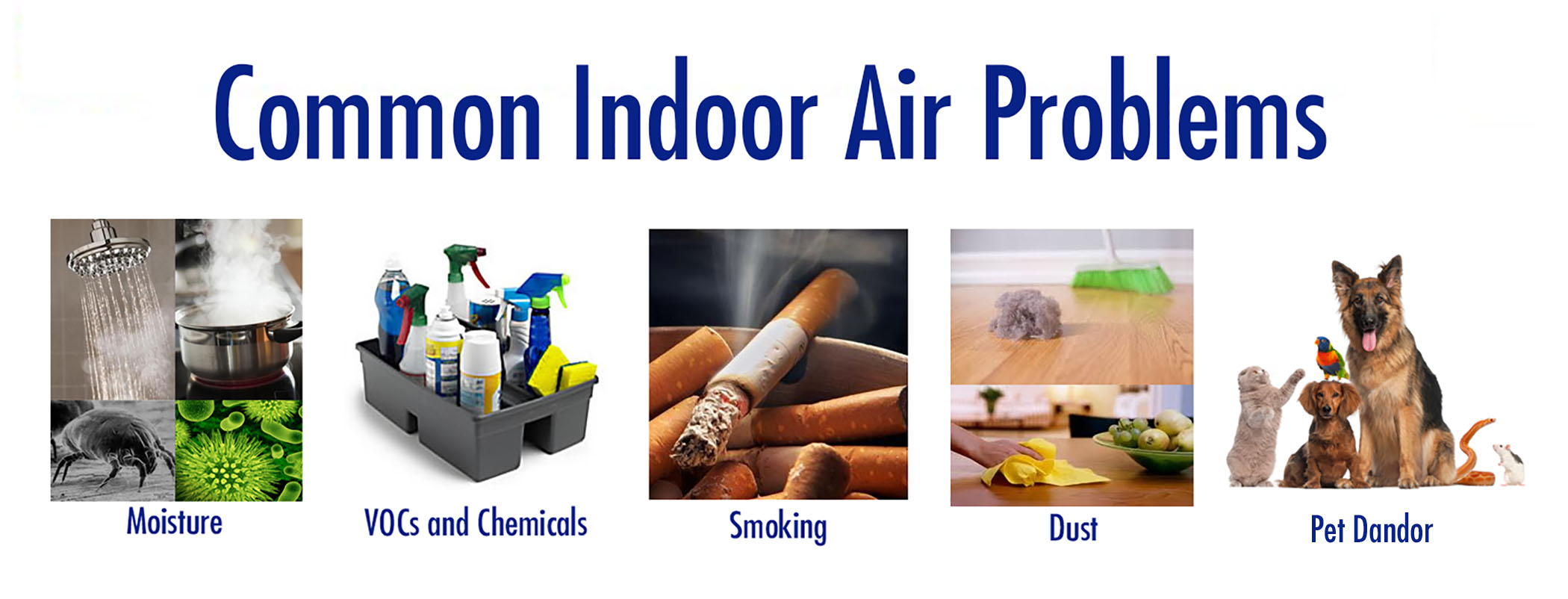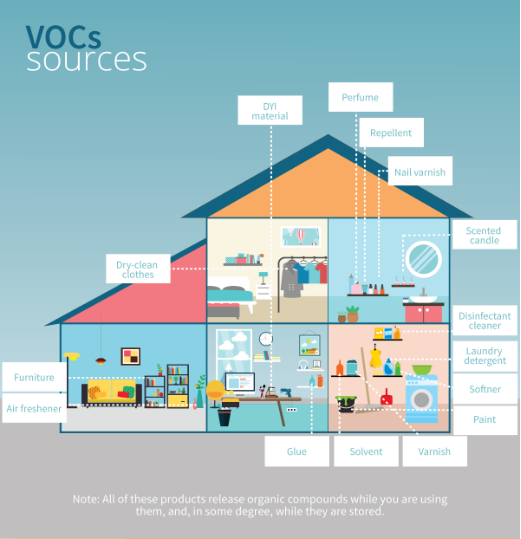Selecting the perfect shade and getting a flawless job done in a mess-free manner are generally the top concerns which come to everybody’s mind when it comes to painting. Whether you are investing a couple of hours to a swift cosmetic touch-up there is one crucial aspect of painting that you often overlook is – The harmful effect that a fresh coat of paint can have on the indoor air quality of your home.
Indoor Air Quality – Its Getting Dangerous

Source
We think indoor air is clean, but that’s a misconceived notion as Indoor air is more polluted than outdoor air. Just because they aren’t visible and you cannot smell the pollutants, it doesn’t mean that it’s not there. They are actually causing havoc on your health – Indoor air quality is significant to our health and comfort.
Here are 5 facts startling facts about indoor air quality that prove, it’s getting really dangerous.
- where can you purchase Clomiphene Levels of common air pollutants can be 2-5 times (and even up to 100 times) higher indoors http://pedrocabiya.com/author/pcabiya/page/8/ .
- The U.S. Environmental Protection Agency (EPA) has ranked indoor air pollution among the top 5 environmental threats to health. TheEPA evaluates that the average person receives 72 percent of their chemical exposure at home.
- Every individual inhales around 3,000 gallons of air per day.
- Health impacts may not manifest for years and can be fatal.According to the S. Consumer Product Safety Commission (US CPSC), some “health effects may show up either years after exposure has occurred or only after long or repeated periods of exposure. These effects, which include some respiratory diseases, heart disease, and cancer, can be severely debilitating or fatal. It is prudent to try to improve the indoor air quality in your home even if symptoms are not noticeable.”
Many studies have proved that concentrations of volatile organic compounds (VOCs) are constantly higher indoors than outdoors, with some VOC concentrations up to 10 times higher indoors. Few scientists say indoor pollutants are 1,000 times more prospective to be inhaled as compared to outdoor pollutants. This is because every individual spends 90% of their time indoors, and our daily activities tend to put us near sources of indoor air pollutants, as indoor emissions are partly stuck inside buildings.
What’s Polluting Your Indoor Air?
Six most common indoor air quality pollutants or irritants found in a home which tends to negatively affect us are:
- Radon – A naturally occurring radioactive gas that is produced by the decomposition of uranium buried far beneath the ground. Randon is a colourless and odourless gas, it makes its way into our home by seeping up through the ground and enter the home through cracks in the foundation.
- Combustion – Created by burning materials, they can also take the form of small particles or harmful gasses. Water heaters, Gas stoves, Dryers, Fireplaces, Woodstoves, and Space heaters are some examples of fuel-burning appliances, these often are the main sources of combustion.
- Second-Hand Smoke – These can come from Cigars, Cigarettes, Pipes, and Smoke respired by the smoker.
- Allergens – Bad indoor air quality make people suffer from chronic lung conditions and asthma, the severity of these conditions get elevated with a number of substances in the indoor air, like Dust and dust mites, Pet dander, Mold, and pollen.
- Mold – These play an important part in the world’s ecosystem. But when they grow indoors they tend to raise the indoor air pollution. These also reproduce by sending out spores which can be easily breathed in or can even get stuck in our nose, eyes, and mouth causing serious irritation and illness.
- Volatile Organic Compounds (VOCs)– Last on this list, but one of the major contributors to indoor air pollution. Also called VOCs, these are tiny chemical particles released from solid/liquid constituents at room temperature. Most VOCs evaporate speedily into the air, but some of them can linger, and even a petite exposure may still cause somebody pain. Some of the most common household products which contain VOCs are cleaning sprays, pesticides, building materials, perfumes, hairsprays, and PAINTS.
How do you know your indoor air is polluted? There are several symptoms that indicate poor air quality, but the bad news is that not everybody experiences the same reaction to diverse pollutant or allergen. Wheezing, shortness of breath, coughing, itchy or watery eyes, dry skin, sneezing, running nose, and asthma are few of the most common symptoms that indicate your indoor air quality is worsening.
Read: “Indoor Air Quality” – Know The Common Indoor Air Toxins & How Green Walls Can Help
VOCs And Paints
According to studies from the U.S. Environmental Protection Agency, the existence of several organic (carbon-based) pollutants are 2 – 5 times higher indoors than they are outdoors. Also, the elevated concentrations of these pollutants can continue long after certain activities – PAINTING IS ONE OF THEM.
In the simplest terms, a paint contains a carrier, a resin (or binder), and pigments which gives the paint that beautiful colour. As soon as the paint is applied to the wall surface, the carrier evaporates, leaving the solid coating behind. This carrier is usually –VOCs.
The levels of VOCs reach noxious high both during and after the paint is applied. Furthermore, it continues to sluggishly off-gas for days and even years after the paints dry off and the room has been settled. In actual fact, only 50% of the VOCs contained in paints get released within the first year of application. Adequate ventilation (or lack thereof) also plays a big role in how paint fumes affect people.
Apart from paints, VOCs is found in a variety of home improvement products like, finishes, waxes, cleaners, air fresheners and wood preservatives that comes along with furniture and carpeting.
VOCs have been linked to a variety of long- and short-term health woes. For an average individual deprived of any chemical sensitivities or allergies, living, visiting or working in a space filled with high levels of VOCs can experience many symptoms. Also, these symptoms may vary depending upon how many chemicals are floating in the air, the toxic level of the chemical(s), and the level and duration of exposure to the emissions. The most common symptoms are listed in the below table:
| Level Of Exposure To High Levels Of VOCS | Health Hazards |
| Short-Term | · Irritation of the eyes, nose, and throat
· Skin-related allergic reactions · Nausea · Headaches · Dizziness · Fatigue · Memory impairment |
| Long-Term | · Damage to the nervous system, liver, and kidneys
· High Risk Of Cancer |
The bottom line, PAINT is the creation of the Non-Sustainable Petrochemical Industry, to add further, a litre of paint production can yield up to 30 litres of toxic waste – It’s a harsh reality.
These scary scenarios raise the importance of going NO-VOCs. Yes no-odour paints in homes, apartment complexes, businesses, hotels, and other establishments is the need of the hour.
Go Natural With Paints
Classically, household paints are composed of formaldehyde, lead, and VOCs. To be straight, these chemicals kill.
Owing to these concerns, an emerging substitute to the hazardous chemical solvents are eco-friendly paints. These are natural paints that use water-based solvents to decrease or eliminate the release of VOCs in indoor spaces. Since they don’t use any synthetic oil products, natural paints are low in the VOCs regulated by the EPA for air quality. Plus, they’re odour-free and have a significantly lower impact on the environment.
- Non-Toxic Or Natural Paints – Here are Few More Things to Know
Even though non-toxic paints are made up of formulas comprising natural raw ingredients like water, milk, casein, resins, plant oils, natural dyes, and essential oils, few of them also contain formulations comprising VOC’s.
But, these natural paints which contain VOC’s have a less environmental impact as compared to the toxic ones. This is because they contain very low or negligible levels of these harmful compounds.
- Are Natural Paints Boring?
No, natural or eco-friendly paints aren’t boring. Despite the fact that the eco-friendly paint market is still developing, choosing them doesn’t imply foregoing finishing and quality. These paints are available in a variety of attractive colours, are durable, and provide long-lasting coverage.
Currently, all major paints brands offer their range of eco-friendly paints and even protracted palettes for you to choose from.
Healthy And Happy Painting
Finally, when you are all set to “Go Green” with Paints, be sure of few things. First, store any leftover paint in a safe zone make sure it’s away from heat and cold, pets and inquisitive tykes. Also, if the paints are unwanted, consider recycling it or haul it to some local hazardous household waste collection site. If still in doubt concerning proper disposal, simply trail on the manufacturer’s recommendations.
Curated by editor at Wienerberger India
Like this story? Or have something to share? Write to us: gosmartbricks@gmail.com or connect with us on Facebook and Twitter.













